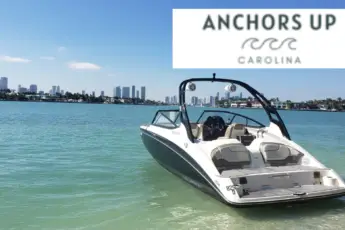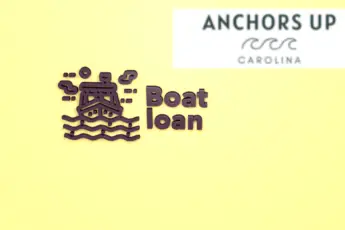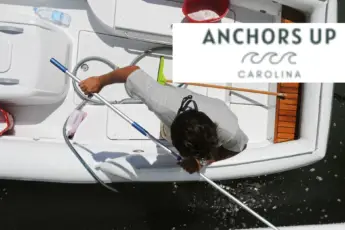As a boat owner, one of the most fun things to do on the water is visit the beach. Fortunately, boat owners or boat club members have the opportunity to visit remote beaches. Remoted beaches are those that are not accessible by car. My family and I make beach trips often, but I always have to pay close attention to tides. Tides significantly impact anchoring as the water rises or falls, depending on the phase. Unfortunately, too many boaters fail to pay attention to changing tides and, therefore, face two different unique challenges. How to anchor boat at beach? Know the tides before you leave the dock.
Impacts Of Failing To Plan The Tides When Anchoring At The Beach
I have seen countless people fail to properly plan tides when headed to the beach. Without question, this can lead to serious trouble for the unsuspecting boater. Here are the two biggest impacts based on tidal stages when failing to monitor tides when anchoring at the beach.
Falling Tide
Depending on location, tides fall at a rapid rate; therefore, planning must take place when anchoring a vessel.
I most often boat along the Georgia coastline, where we have seven to nine foot tidal swings. Without a doubt, that is a significant amount of water movement over a six-hour time span.
The falling tide puts boaters at risk of becoming beached on the sand. Unsuspecting boat operators are relaxing on the beach when the water all but disappears from beneath the hull.
For this reason, the positioning of the vessel in the water must be adjusted periodically as the tide flows out.
I suggest paying out a significant amount of bow anchor line when first setting the hook. Paying out extra line will save you from having to pull and reset your position. The line is available to retrieve when shifting the boat to deeper water by hand. Plenty of scope will be available despite taking up on the line when sliding the vessel into deeper water.
Importantly, you need to pay close attention to the depth of water beneath the boat. I adjust the position on a failing tide sometimes six times in a single day.
Don’t let the tide fall far enough that you are unable to move the vessel because it is beached. In this situation, you will be required to sit and wait until the incoming tide lifts the boat high enough to depart the beach.
Rising Tide
Fortunately you will not need to be concerned about the boat becoming beached with a rising tide. That is, of course, unless your anchor pulls and the boat drifts.
On a rising tide, you will have the option to get the boat in as tight as possible to the sandy shoreline. For this reason, it is easy to offload people and beach gear compared to swimming it in on a falling tide.
However, just because the tide is rising doesn’t mean the vessel’s position does not need adjusting.
Failing to adjust the boat’s position on a rising tide will leave it off in the distance from the shoreline. This presents a challenge when you’re ready to pack up for the day and head home.
Without question, currents are strong. You can’t expect children, pets, and even adults to swim safely back to the boat when it is well away from the beach. Furthermore, consider getting your beach chairs, umbrellas, coolers, and more back to the vessel.
Importantly, you’ll need to make frequent adjustments to the position of the boat on a rising tide. I suggest paying out the bow anchor line in order to keep it within walking or short swimming distance.
Trust me, I know it requires you to climb back in and out regularly, but it will pay off in the end. Again, it’s simply too dangerous to swim extended distances from the beach to the boat in currents. Lastly, there is no sense in soaking beach gear when it can be passed off from the beach with proper boat positioning.
Monitor The Tides When Anchoring The Boat At The Beach
Tide charts are readily available online. Therefore, you can get all of the information you need with the touch of a button. I suggest researching the tides before heading out on the water. Keep the transition points in your mind as it shifts from high to falling or from low to rising. The goal is to, most importantly, keep everyone safe but to avoid grounding the vessel at the beach.






